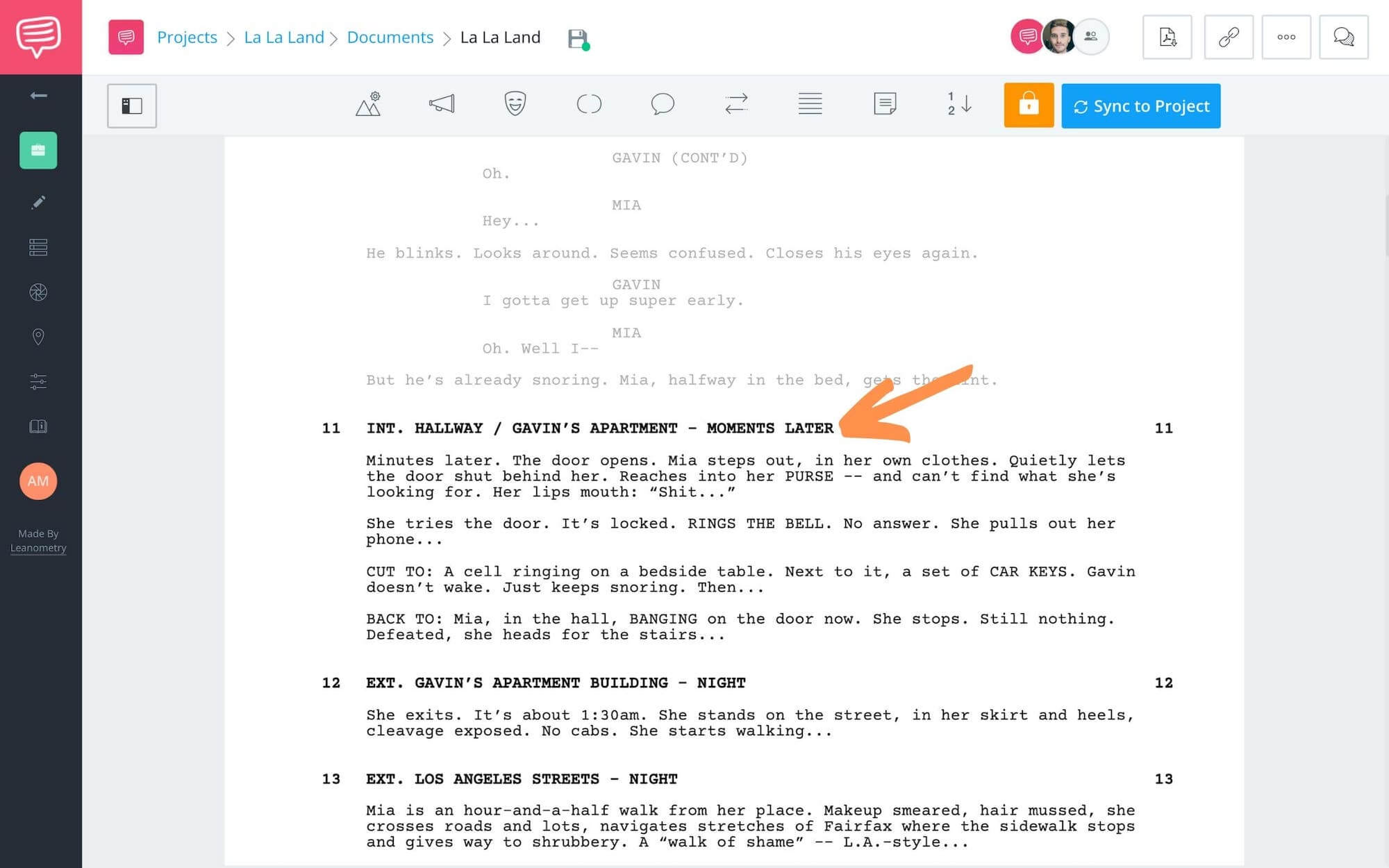

Where he dives on top of his bed and sobs. John slams the front door and races down the I'll illustrate all of these points below.įirst, we'll begin with the master scene heading that includes a secondary location and then move to other secondary locations. In addition, it's okay to add a secondary location to a master (primary) location in a master scene heading. Other locations (such as BEDROOM or HALLWAY) that are part of the master location are called secondary locations the resulting heading is called a secondary heading. How can a bathroom be part of a swamp, and how did we get from an exterior camera placement to an interior camera placement?īegin a scene with a master scene heading, which names the master (or primary) location for example, EXT. As a script consultant, I often find myself saying while reading a script, "Where am I?" For example: Oh, that's easy-scene headings, sometimes called slug lines. What is the most common formatting error that you see? No reader will scream.įebruary 2023 MY FAVORITE FORMATTING FLUB However, if you want to write out the scream for some comedic or dramatic reason, then please do so. Since that is a sound and not a word, it should be written as narrative description. How about human screams? For example, I often see something like this: What if a cat meows or a dog barks? These are sounds and should be written as narrative description and not as dialogue. Let's pose another question that does not involve subtitles. In either case, the extension would look something like this: Perhaps a better option is to use a special extension for just this situation. NOTE: When Tabby meows, subtitles will appear with the meaning of her words in English. In such a case, I suggest a clarifying note when Tabby is first introduced. If Tabby talks throughout the screenplay, then the constant addition of the parenthetical can be laborious. You could do that, but I suggest you handle it like a foreign language: My best guess would be something like the following where TABBY is a cat and BOB is a person. When an animal utters its natural sounds, how do I indicate English subtitles? My specific example is for a cat that is meowing to a person, with the English translation appearing as subtitles.

Normally, you would write CONTINOUS after HALLWAY, but we don’t need to because it’s already obvious that the scene follows the previous scene CONTINOUSLY. Vicki continues to drink, but Bob rushes into the There are several ways you can handle this. Also, omit the camera direction (TRACKING). When you present two locations in one scene heading, list the larger (or master) location first (which you do) and separate them with a dash (which you don’t).

What do you do when you have a character walking from one area to the next, say a kitchen into a hallway? Is the following format correct? Since we are on the subject, an ellipsis is usually used in dialogue to show continuity, a pause, or a character trailing off, as Marlene does in the example belowĪn introspective expression comes over Marlene’s face.Ī dash is normally used to show interruption. (In other forms of writing, there is not a space before or after the ellipsis.)

This “rule” of a space after the ellipsis only applies to screenwriting. She looks at Fluffy and changes her voice.ĭo you space before an ellipsis and also after an ellipsis, or is there no spacing before and after?ĭo not space before an ellipsis but do space after. Let’s assume in the following example that the adult male is Angel’s dad and that Angel plays a little joke on him. When Angel is speaking as herself, put the name ANGEL in the character cue, and when she speaks as the stuffed animal (which we will call Fluffy), put ANGEL AS FLUFFY in the character cue. How do I differentiate between the two voices? At the park, she holds up a stuffed animal and changes her voice to speak for the stuffed animal. My story features an adult male who takes Angel, a six-year-old girl, to Fun Park. He is an award-winning teacher and script consultant, author of The Screenwriter’s Bible, and friendly host of. DAVE TROTTIER has sold or optioned ten screenplays (three produced) and helped hundreds of writers break into the writing business.


 0 kommentar(er)
0 kommentar(er)
